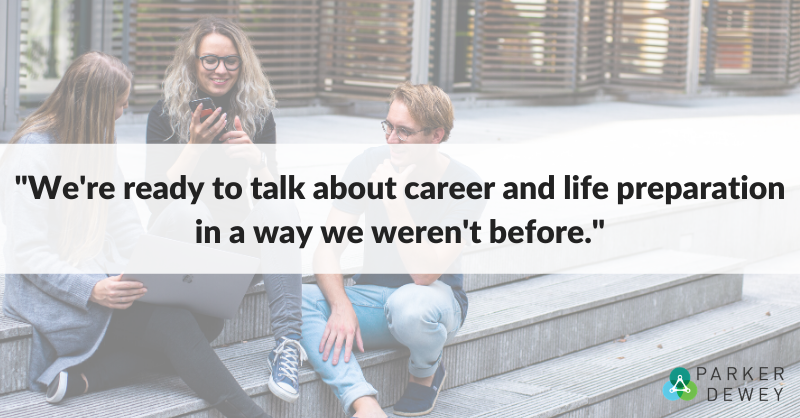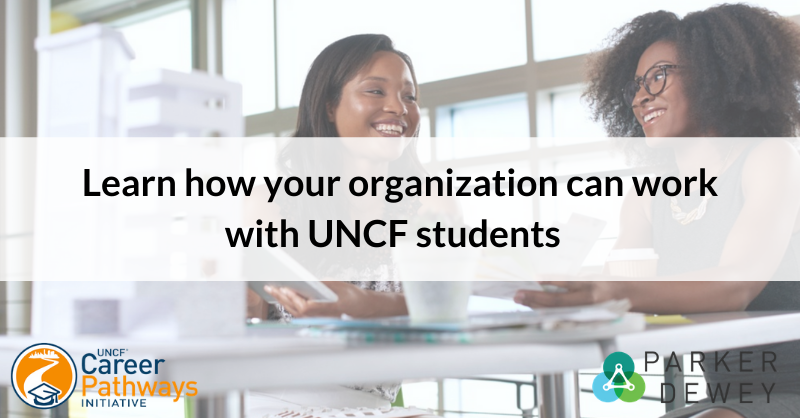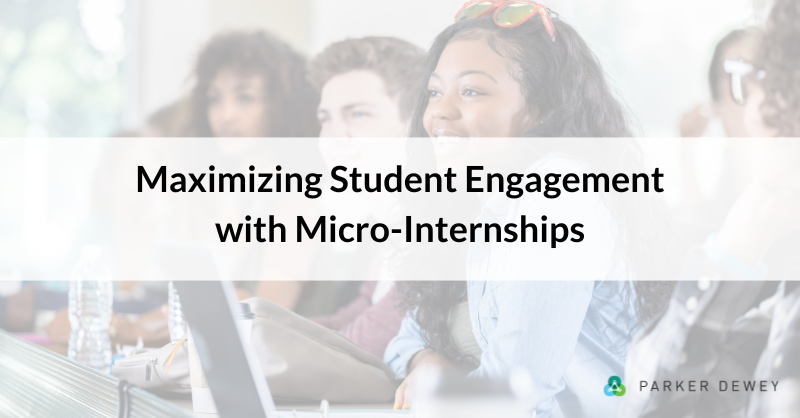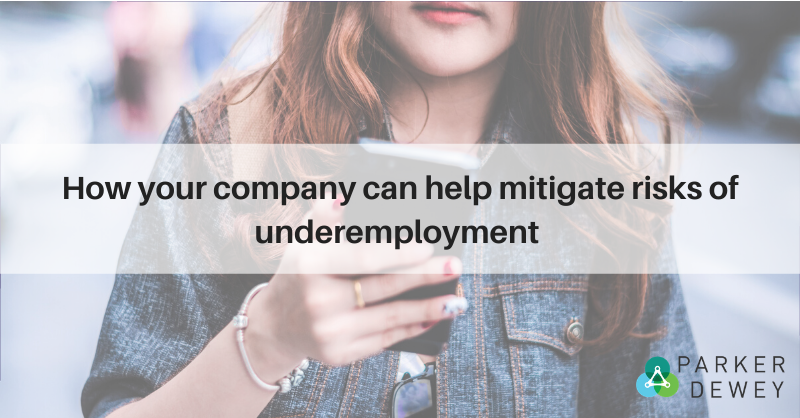
How professional experiences support post-graduation success
Click here for original post by Michael Anft on the The Chronicle of Higher Education
As with many students, choosing a career has been a bit of a puzzle for Tianna Avery.
On entering Carleton College, she flirted with the idea of becoming a physician. A Carleton-sponsored trip she took during her freshman year to explore medical facilities in Minneapolis made her think gain. "It looked like studying medicine would take up all my time," she says. "I need more freedom in my schedule."
The following year, she decided to explore other possibilities. Along with 12 other sophomores, Ms. Avery took advantage of a Carleton program that flies students to Silicon Valley to tour Facebook, Google, and other tech companies. That turned her head.
"It was a really helpful trip," says Ms. Avery, 20, and now a junior majoring in computer science who hopes for a career in software engineering. "It made me realize what I wanted to do — and that I had to concentrate more on my academic work. The tour gave me an idea of what it takes to get a job at one of those companies." Several institutions, including Carleton, in Northfield, Minn., now attempt to reach all of their students early and often to get them thinking about what will happen once they pack away their caps and gowns.
Her story encapsulates a sea change in how liberal-arts institutions view the role they play in shaping a student’s postcollege life.
Not so long ago, most small private colleges had little interest in providing undergrads with career advice, exposure to a range of jobs, or a wide array of internships and other professional experiences. But the recession and continuing anxiety among parents and students regarding a tough job market has led many institutions to start or expand programs that ready students for careers that match their goals."There’s been a large shift in thinking. It used to be enough that a liberal-arts education allows people to develop as human beings, something we’ve traditionally seen as an intrinsic good," says Lynn Pasquerella, president of the Association of American Colleges & Universities, which represents 1,400 institutions and works to advance liberal education and inclusiveness. "But as student-loan debt has grown along with tuition costs, the benefits of a strong college education are less certain. There’s been a decoupling of college education from the American dream."
Career planning has long made private colleges uncomfortable, but many now concede that they must do more to support student success after graduation — including getting them to graduate-school programs if they desire.
"There’s long been a thought in liberal arts that we shouldn’t talk about vocationalism," Ms. Pasquerella says. Some administrators and faculty members don’t like getting cozy with corporations that can offer students early career experiences, or with the idea of expanding the college’s mission beyond the lifelong value that a liberal-arts education can offer in and of itself. "At the same time," she says, "we’re here to prepare students for life, work, and citizenship. We have to provide guidance in all three areas."Other top liberal-arts colleges, including Amherst, Bowdoin, and Colby, are also investing heavily in undergraduate career-development programs. A few have included career centers in their capital campaigns. As a rule, such institutions offer career counseling and have significantly increased the numbers of paying internships, to firm up their commitment to their students’ post-commencement lives.
"Essentially, we’ve rewritten the contract that we have with students," says Mark Peltz, dean of the Center for Careers, Life, and Service at Grinnell College. "We just welcomed the Class of 2021, a group that has seen the economy struggle and heard alarming news about the job market of the future. We have an obligation to help them through that."[image_with_animation image_url="2249" alignment="center" animation="Fade In" box_shadow="none" max_width="100%"]Colleges have tried various approaches: creating new majors that can set students on in-demand career tracks, or calling on alumni and parents for help opening up externships — brief student experiences at job sites — where they work. Columbia College, in Columbia, S.C., developed a career-advisory council for students. At Furman University, thousands of undergrads have been introduced to professional mentors. Randolph-Macon College started a career boot camp for sophomores.
Helps Students and Colleges, Too
At Carleton, President Steven Poskanzer began strategic planning shortly after he was hired, in 2010, to find out what more the college could do for its students. After 18 months, Carleton alighted on six areas where it thought it could improve, including career development. The college’s decision to move in that direction was partly based on the tougher market faced by small residential colleges and the fierce competition among them for students.
Besides helping students find their way in the world, Carleton’s emphasis on postcollege success has also helped the college better answer questions posed by prospective students and their parents, many of whom are concerned that the high cost of an education may not add up to better opportunities in the long term.
"We’re ready to talk about career and life preparation in a way we weren’t before," Mr. Poskanzer says. "Great liberal-arts institutions haven’t made a priority of this. We thought this was one area where we could distinguish ourselves in the liberal-arts realm. It would add value to our students’ education while making Carleton more distinctive."
During the planning process, faculty and staff members, students, and trustees discussed ways to further the college’s mission while making its students more worklifeready.
At the time, few small liberal-arts colleges had made the both-feet-first leap into career programs. Carleton — at $66,414 a year a high-priced, 150-year-old residential institution with 2,000 undergrads — decided that career programs represented one way to fend off the serious challenges that colleges like it have confronted since the recession.
What’s more, Mr. Poskanzer and others at Carleton had heard stories of graduates floundering for years after leaving the college. "People were still struggling to figure out how to make a place, and maybe a difference, in the world," he says.
Carleton expanded its reach to students and hired four more counselors, for a total of 11. It began assigning a "liberal-arts adviser" to each student entering the college. Those advisers guide students through their first two years, with an eye toward developing their career goals. Early on, students can also avail themselves of Carleton’s Career Center programs and an alumni board that encourages them to think of their passions as a way to devise a path toward a career.
As sophomores, students get what Mr. Poskanzer calls "bite-sized opportunities," including externships, many underwritten by Carleton, to explore certain professions, as well as trips that focus on attaining job and leadership skills — trips like the ones taken by Ms. Avery. Seniors who feel the need to catch up on their career plans can take a "kick-starter" course to learn more about job searches, networking, and résumé writing. Paid internships — which the college sometimes subsidizes, helps arrange, or both — are available the summer before a student’s junior and senior years. This summer, 125 students received money earmarked to support unpaid or low-paying internships.
Carleton also called on an army of alumni and parents to find students more experiences out in the world. Administrators put protocols in place to make sure that the Career Center and faculty members developed ways to collaborate to get students thinking about meaningful work. Those include a committee of faculty members and administrators that meets regularly with Career Center staff members, and a staff liaison between the center and each academic department. The program’s success in its first five years has been tricky to measure, Carleton officials concede. The programs are popular with parents and students, and the college has begun to tease out some information indicating that students are having better outcomes because of career programs, says Kimberly Betz, director of the Career Center. The college can boast a high number of advanced-degree earners — about 80 percent of its students eventually earn graduate degrees. But it often can’t tell whether former students are leading the lives, or embarking on the careers, that they wanted.
"What metrics do you use to size up a quality life? That’s the $50-million question," says Ms. Betz. "Is it high income? Is it doing meaningful work? We’re still working on figuring out the best ways to measure all that."The college has gathered data on student participation rates. Almost all Carleton students — 97 percent in the graduating class of 2017 — have availed themselves of the center’s programs at some point during their four years there.
The Liberal Arts for Careers
At Grinnell College, in Grinnell, Iowa, a similar pivot toward students’ postcollege life took place six years ago, in part because students were asking more questions about their future. Besides greatly expanding its career programs to provide advisers and more work-related encounters to every student, the college has created a "career relevance index" that measures the percentage of graduates who, within eight months of graduation, have secured jobs or grad-school opportunities that met their goals.
That number has ticked steadily upward, from 79 percent in 2012 to 94 percent for the Class of 2016, according to Grinnell data. Mr. Peltz, who holds what he believes to be the only endowed career-development deanship in the nation, sees that as a sign that Grinnell’s programs are gaining traction.
He uses that information to show high-school seniors that a liberal-arts degree from a career-minded college can indeed lead to longer-term success.
While a baccalaureate diploma might have been the gold standard for career success a generation ago, it holds less value in the marketplace today, he notes. The share of Americans who hold bachelor’s degrees has increased from 28 percent in 2007 to 33.4 percent this year, meaning that colleges need to do more to give their students an edge. "The bar has been raised. Just getting good grades isn’t enough to guarantee a job, even in such subjects as engineering," he says.
Selling students on how to better use their liberal-arts diplomas is one way for small private colleges to emphasize how well they prepare their graduates for life. "The jobs of the future haven’t yet been invented," says Ms. Pasquerella. "You prepare for one career and then you might be replaced by technology. A liberal-arts education can help you become an innovator and get that next job."
But today’s students will still need help getting the right first job. Ms. Betz points to involvement from former students as a key facet in linking students with the careers they want.
"I’m a 1991 Carleton grad, and many of the people I went to school with say they never got that support. They’re happy that they can help students there now," she says. In its current capital campaign, Carleton is attempting to raise $54 million (of a total of around $400 million) specifically to expand its life and career programs, including doubling the number of paid internships. Some of the money would probably go to programs that offer career assistance to young alumni, Mr. Poskanzer says.
More than 1,500 alumni have created profiles on the Career Center’s website. Many have made themselves available to students for career advice, internships, and interviews about what their jobs entail. The college also uses its Careers Alumni Board to create more volunteer leaders among graduates.
Besides linking up students with opportunities, alumni say they are there to offer other levels of guidance.
"One of the things I tell students is that they don’t have to have it all figured it out while they’re at Carleton, and that they probably won’t," says Miles Mercer, the board’s chairman and an economic-development official with the city of Minneapolis. "There will be opportunities and setbacks you never expected as you go along, so as much as you need to think about all this now, you’ll need some patience to get where you’re going."
Now that she is an upperclassman with a better idea of what her future might look like, Tianna Avery says she’ll continue to tap Carleton’s Career Center and alumni for help. She’ll ask for advice on writing her résumé, make an appointment to go through a mock job interview, and apply for high-tech externships that run during the college’s three-week winter break.
"I’m learning more about what employers expect," she says. "And one thing they want is students who can take on their own personal projects and make them work — and not just come in and do their jobs. It’s something I wouldn’t have fully understood if I hadn’t had the chance to visit them."
A version of this article appeared in the October 27, 2017 issue of The Chronicle of Higher Education.




